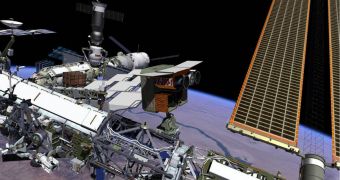A former NASA astronaut is proposing a daring way of going about exploring Mars. He is arguing that plasma technology should be employed for traveling to the Red Planet, and says that the technology to make all of this possible already exists. He adds that an electric engine using superheated plasma for thrust could reach Mars in as little as 40 days, whereas currently used propulsion systems would take more than a half a year to do the same. Franklin Chang-Diaz underlines that his proposal should be given some serious thought, Space reports.
Oddly enough, at this point, technology is not the real issue for a round-trip to Mars. What makes scientists nervous is the potential effect that such a journey would have on the human body. Putting three or more astronauts in a small space vehicle, and setting them out in the vastness of space may not be the best idea in the world. There are psychological and external factors to consider, as for instance the fact that such isolation could make anyone fall prey to hallucinations, or other mental disorders. In addition, cosmic rays and other space radiation could severely affect astronauts' health. Disease outbreaks on the ship would mean catastrophe, too.
But most of these problems could be avoided if only the trip took less time. And this is precisely where the new propulsion system comes in. The proposed rocket engine uses electricity and magnetic fields to coerce superheated plasma to exit through thrusters, thus providing an ever-accelerated motion through space. The plasma flux is both steady and energy-efficient, and uses only small amounts of propellant. “People have known for a long time, even back in the '50s, that electric propulsion would be needed for serious exploration of Mars,” says the director of development at the Ad Astra Rocket Company, Tim Glover.
A mission study elaborated by the company shows that a trip to Mars could take only a month, given that sufficient electricity is provided to such a plasma engine. The American space agency may actually consider such technology fairly soon, if the budget proposal for 2011 passes Congress. If Project Constellation is canceled, then this would free up funds for new propulsion systems to be investigated. There is also a willingness from top NASA officials to orient the agency's efforts towards moving beyond low-Earth orbit, and on to Mars.
“While we cannot provide a date certain for the first human visit, with Mars as a key long-term destination we can identify missing capabilities needed for such a mission and use this to help define many of the goals for our emerging technology development,” said last week during a hearing the NASA Administrator, Charles Bolden. Ad Astra's Variable Specific Impulse Magnetoplasma Rocket (VASIMR) could be one of the potential candidates to receive NASA funding for further development.

 14 DAY TRIAL //
14 DAY TRIAL //